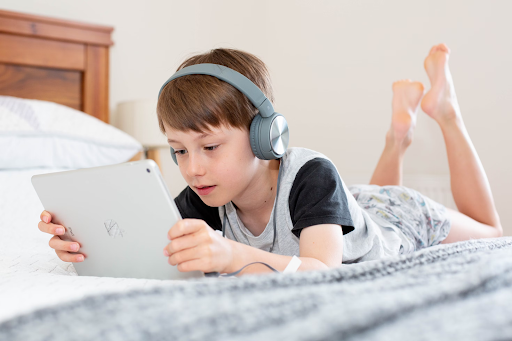Do Children with ASD Suffer from PICA?
- HEALIS AUTISM CENTRE

- Jun 14, 2022
- 4 min read

Pica is an eating disorder that involves compulsive and repeated ingestion of nonfood items, such as hair, dirt, cigarette butts, and toys, for at least a month. It is considered a severe form of self-injurious behaviour because it may result in gastrointestinal parasites, lead poisoning, choking, and intestinal obstruction or perforation – all of which might be fatal. This is to be differentiated from mouthing or teething, leading to occasional swallowing of nonfood items, which typically stops at 18 months of age. A child is diagnosed with pica only when such eating behaviour continues after this age and is markedly inappropriate for their developmental level. According to Fields et al. (2021), 23.2% of children with ASD have pica, compared to 3.5% in the general children population. It is thus paramount to understand the factors that might lead to pica and strategies to curb such behaviour. We discuss two characteristics that many children with autism possess that may make them more prone to have pica, followed by tips to tackle each of them, below.
1. The need for sensory stimulation and regulation
Children with autism often crave sensory stimulation (Autism Speaks, 2014). Non-food items that are accessible more often than food items (e.g. toys, hair) satisfy this stimulation for them as they take pleasure in their textures, smells, and tastes. Importantly, individuals with autism have been found to seek items with sensory characteristics that they find appealing. Ingesting these items automatically reinforces the pica as they experience sensory feedback through this behaviour. As such, the behaviour of ingesting non-food items becomes maintained and might be tricky to break.
One way to tackle this factor is to provide children with alternative forms of stimulation such as toys and food. In this case, the goal is to eventually gear them towards more appropriate items that fulfill their stimulation needs using competing stimuli that match in terms of the type of stimulation. For example, a child that craves oral stimulation can be given a toothbrush to brush their teeth, or a chewy gummy that would last long in the mouth. This method of using matched stimuli to provide a child more appropriate ways of stimulation has been found to significantly reduce pica behaviour (Piazza et al., 1998). It works by the logic that if pica is maintained by automatic reinforcement, e.g. oral stimulation, providing more appropriate items that offer similar stimulation potentially reduces pica.
2. Difficulty in differentiating food from non-food items
Due to the lack of communication skills and the receptive deficits that some individuals with autism face, several studies have attributed pica behaviour in children with autism to their inability to distinguish between food and non-foods (Bicknell, 1975; Fields et al., 2021; Provost, Crowe, Osbourn, McClain, & Skipper, 2010). One other possible factor for this difficulty in differentiating edible and inedible items could be that these children have not outgrown the developmental mouthing stage. Akin to young babies who would put different items into their mouth without thinking, these children with autism have yet to learn and recognise food from non-foods.
An effective way to address this problem is by conducting skill-building practices with your child to teach identification of food from non-food items. First, have your child sit at a table with a plate. Next, put a few non-food items on the table, as well as your child’s favourite food on the plate. When your child eats from the plate and does not put non-food items in their mouth, reward them by allowing them to have a toy or to indulge in a favourite activity, such as watching television. Repeat this process on different sessions and gradually generalise the items on the plate to more neutral food items. This practice trains them to only eat things placed on plates and shows them that they should avoid eating non-food items, even when they are available.
Conclusion
Summing up, although pica is a dangerous behaviour that might lead to severe health consequences, it is often not permanent and can be managed by analysing underlying factors contributing to it. Being attentive and monitoring your child’s habits is the most important step towards reducing pica. For a start, caretakers may want to keep track of a list of non-food items children with pica eat as well as how often pica is exhibited. This way, it would be easier to narrow down the reasons for pica and tackle them thereafter.
Written by Rachel Yam.
References
Autism Speaks (2014) Parent’s Guide to Managing Pica in Children with Autism. Retrieved from https://www.autismspeaks.org/sites/default/files/2018-08/Pica%20Parents.pdf
Bicknell, J. (1975). Pica: A childhood symptom. Southampton, England: Camelot Press.
Fields, V. L., Soke, G. N., Reynolds, A., Tian, L. H., Wiggins, L., Maenner, M., ... & Schieve, L. A. (2021). Pica, Autism, and Other Disabilities. Pediatrics, 147(2), 1-8..
Piazza, C. C., Fisher, W. W., Hanley, G. P., LeBlanc, L. A., Worsdell, A. S., Lindauer, S. E., & Keeney, K. M. (1998). Treatment of pica through multiple analyses of its reinforcing functions. Journal of applied behavior analysis, 31(2), 165-189.
Provost, B., Crowe, T. K., Osbourn, P. L., McClain, C., & Skipper, B. J. (2010). Mealtime behaviors of preschool children: Comparison of children with autism spectrum disorder and children with typical development. Physical & occupational therapy in pediatrics, 30(3), 220-233.
Stiegler, L. N. (2005). Understanding pica behavior: A review for clinical and education professionals. Focus on Autism and Other Developmental Disabilities, 20(1), 27-38.
Picture Reference:
May Institute (n.d.) [Baby putting toy in mouth] [Photograph] Retrieved from https://www.mayinstitute.org/news/acl/asd-and-dd-child-focused/what-is-pica/








Comments